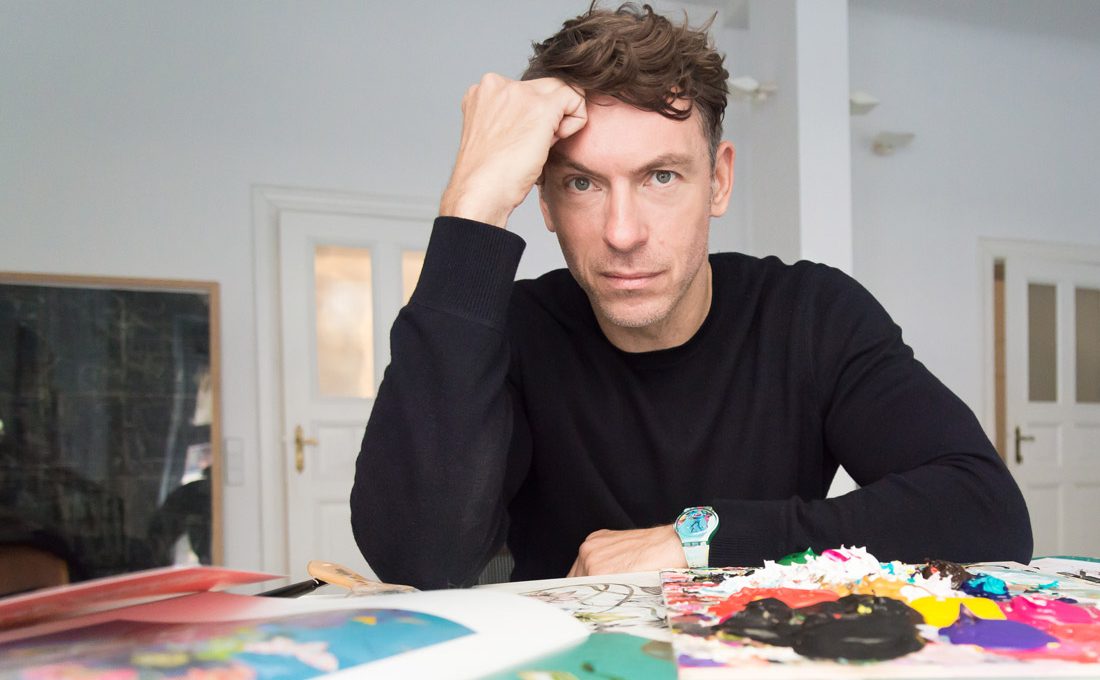We met with illustrator and painter Olaf Hajek in his Berlin-Mitte studio for a perfume blindtasting and confronted him with Smoke For The Soul by By Kilian. Find out here how he reacted! In his work Olaf Hayek uses folk culture, mythology, and fairytale motifs to explore the space between imagination and reality within western culture. The medium for his associative and dreamlike illustrations is acrylic on cardboard, wood and paper — never the computer. His works have been featured in The New Yorker, Playboy, The New York Times and many other international publications.
PORTRAITS: Per Zennström
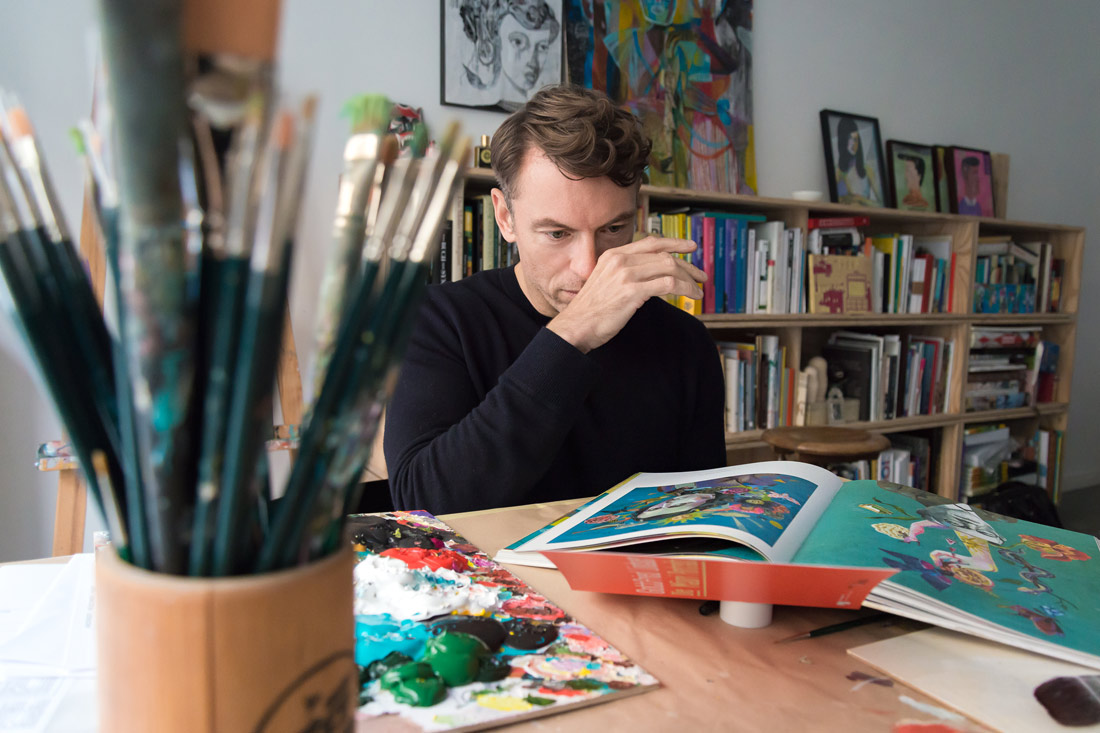
1. THE BLIND TASTING
SMOKE FOR THE SOUL BY BY KILIAN
We confronted Olaf Hayek with a mystery perfume in a neutral, opaque vaporizer. Only afterwards did we reveal the name of the scent. Follow Olaf on his journey into scent …
“ Fresh, green and cool.”
There is something downright healthy about this perfume — it’s fresh and green and so cool that it somehow even makes my skin tingle. It’s a highly individual, special scent and, I believe, not one that everyone would go for. But that’s just fine, because there’s no point ever trying to please everyone.
To illustrate this scent I would use green hues, floral motifs and grasses. One can convey an impression of freshness wonderfully and then translate it into its very opposite. Contradictions must be part of the act, in any case; otherwise things get boring. I imagine something emerging from a thicket, something with roots of brown but that unfolds as it turns its head to the fresh, cool air: perhaps a meadow swaying rhythmically in the breeze and merging on the horizon with clouds and blue sky.
I can see this meadow through a window: an austere landscape in early summer, possibly in the north of Germany. The overwhelming impression is of wide, open space, swathes of green, and changing skies. The window belongs to a simple, solitary house made of timber and flooded with natural light — a house with a front garden, perhaps even an herb garden.
I’d like a house like that. Then I’d be able to leave Berlin from time to time, to sit by that open window, gaze at the sweeping landscape, take a deep breath and feel fresh air filling my body from head to toe. That is a dream of mine.
I have to be able to breathe! I need fresh air, clear lungs and an open window. That is what I associate with scent. I’ve always had a bit of a problem with bronchitis, actually, so I regularly inhale menthol, mint or pine. That’s why I’m attracted to scents that clear my head. I like that sting of freshness, like a little explosion on the body: a pungent odor that stays in one’s nose.
I rarely use scent. But if I ever were to wear perfume, I think this one would suit me very well. The tanginess of it, its light sting, and the fact of it being a bit healthy make it so unique and distinctive. And I like that!
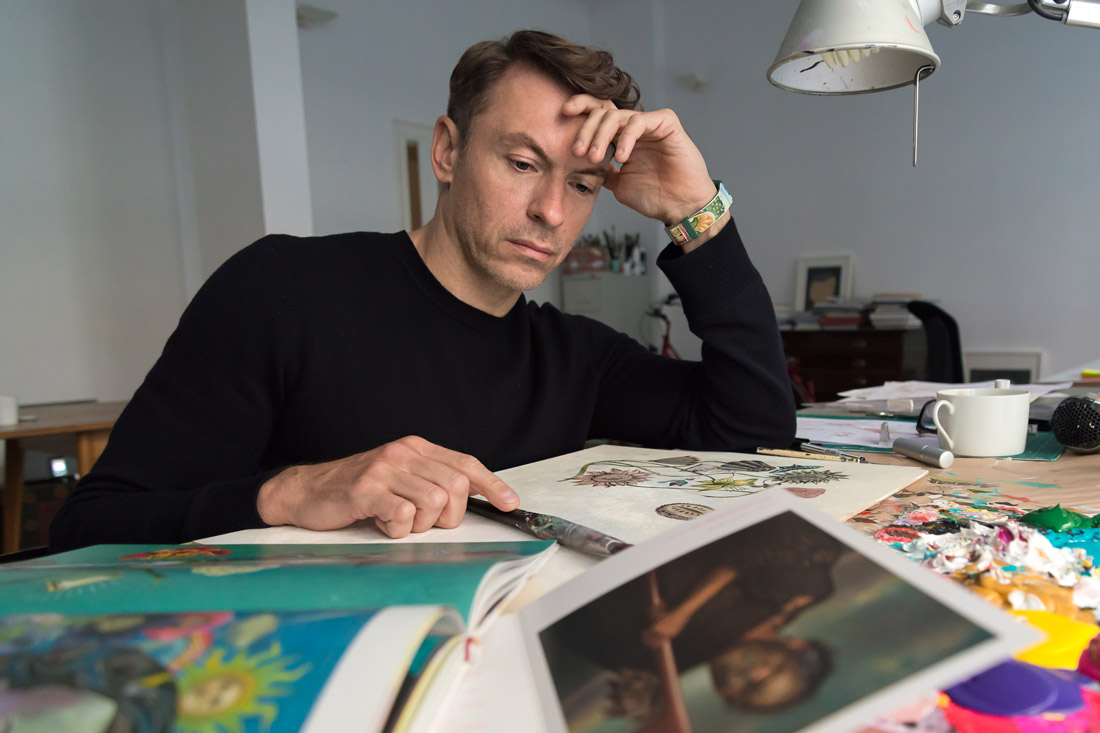
2. THE INTERVIEW
“The imperfection of beauty.”
SCENTURY: What is your earliest olfactory memory?
Olaf Hajek: The first odors that played a role in my life were those of the sea and a seaport. A seaport always smells rotten, brackish or fishy even. But once at the beach, it’s different: everything smells salty and fresh. All those odors trigger memories of my childhood.
SC: You moved house several times as a child?
OH: Yes, we moved to Holland when I was about seven years old. Then four years later to the Rhineland — and my, didn’t it smell different there! The Rhineland has a very close and muggy climate and that’s not my thing at all. I need a dry climate, wind and cool air: only then do I feel really free and fresh.
SC: Was perfume used in your family home?
OH: Yes, my mother wore perfume, no doubt, but it wasn’t a big deal and wasn’t ever talked about. I think in later years she wore something by Jil Sander.
SC: What was the first perfume you ever wore?
OH: Cuiron by Helmut Lang: I was a big fan of his fashion. Somewhat later I found Antaeus by Chanel really great. But I think in each case I actually identified more with the brand and the fashion than with the perfume itself. After that I didn’t use perfume at all for years; and I do so very rarely, even now.
SC: You create very associative and dreamlike work. From where do such images derive?
OH: It’s a process. I gradually — quite intuitively — become conscious of the images and stories before my mind’s eye. The real work is to free oneself of the fear of sharing those inner images with other people.
“What is beauty, after all?”
SC: You often juxtapose light and dark, levity and the inscrutable in your work.
OH: I call that “The Imperfection of Beauty.” That is the theme of my work. What is beauty, after all? Beauty often becomes apparent only when it is marred in some way. I have a memory of my mother, one that deeply influenced my taste. As a child I was a great fan of the actress Judy Winter. When I told my mother about that, she said: “Judy Winter is a striking woman.” And when I asked her, what she meant by “striking,” she replied: “Beautiful with minor imperfections.” And basically I’ve been carrying this definition of the tasteful and sublime around with me ever since. It sums up exactly what I like best: beauty only comes over as beauty when it is not 100% perfect, when something jars.
SC: Perfumes too have a lighter and a darker side. An inscrutable, cryptic note is essential to any good perfume: ambergris, for instance, is actually whale puke that has been washed up on the beach …
OH: Isn’t that just amazing? I should obviously take more interest in perfumes, after all!
SC: Some time ago you created an artist’s edition for the Berlin brand Schwarzlose. How did you go about that?
OH: I was given the five perfumes, all of which have very expressive names; and the company founders Lutz Herrmann and Tamas Tagscherer filled me in on the ideas behind each perfume and of course also on the history of the brand. In essence, it revolves around life in Berlin in the Golden Twenties. The five perfumes tell the story of a day in Berlin: that’s the general idea.
SC: So you didn’t depict any of the actual ingredients?
OH: I did depict a few of them but it wasn’t my intention to list them exhaustively: that would have been far too direct. My aim, rather, was to tell stories.
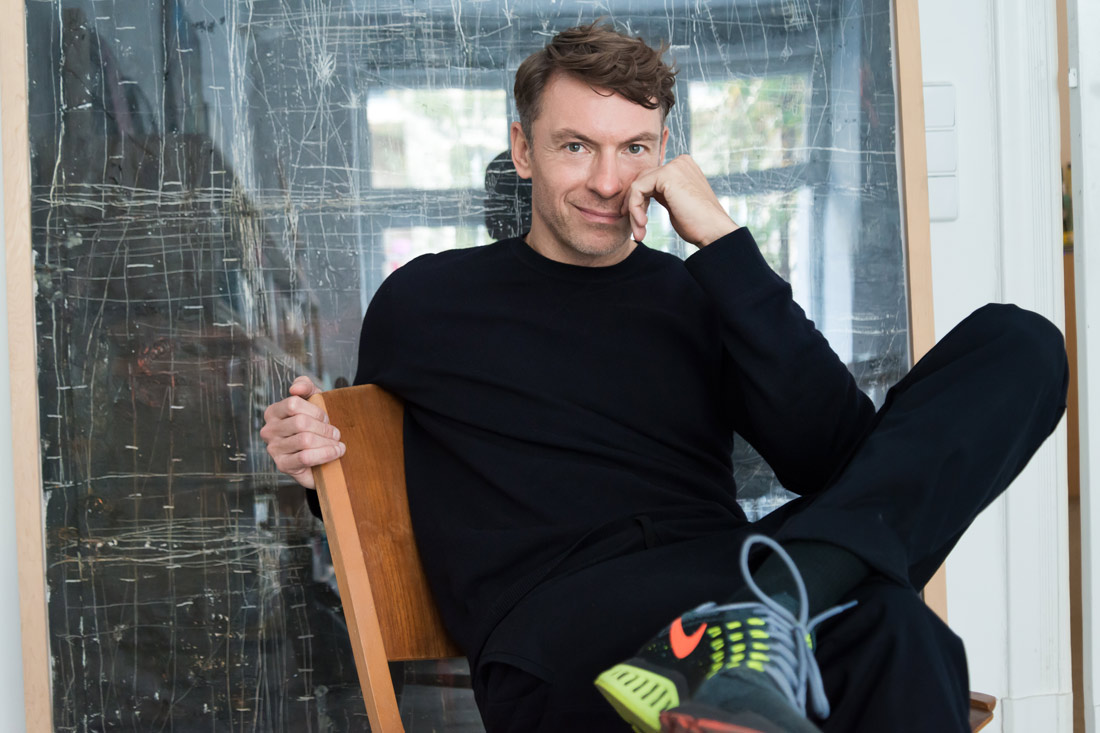
SC: But in general you very much like to portray flowers and plants in your paintings.
OH: I often use floral motifs because they are symbols: they allow me to express a great many things. I have my own particular style of painting a flower yet I also draw inspiration from old botanical illustrations and the Dutch Masters’ still lives.
SC: Do you often have flowers in your studio?
OH: When I buy flowers then generally only two or three at a time — the ones I find particularly interesting. There is a wonderful florist’s called Brutto Gusto just around the corner from here, where I find exactly the blossoms I need. One has to look at a single flower to begin to notice the details. In a large bouquet they’d simply be overlooked. And the details trigger many personal associations. I think the same is probably true of perfume. The same scent triggers different associations for each and every one of us.
SC: How important is it to you, how other people smell?
OH: It’s not so important to me whether someone is wearing perfume, but it is important that he has a pleasant personal odor. And this is doubtless always influenced by the kind of life a person leads. Questions such as what does he eat, or whether he leads a healthy life. A person’s odor probably says a lot about him.
SC: You travel a great deal. The notion of “pleasant” varies enormously from place to place.
OH: That is what makes the interplay of different cultures so interesting, and the world so attractive. And we must take care not to make everything the same. Everyone must accept the idiosyncrasy of everyone else — that’s the only way to preserve our diversity.
SC: Thank you, Olaf!
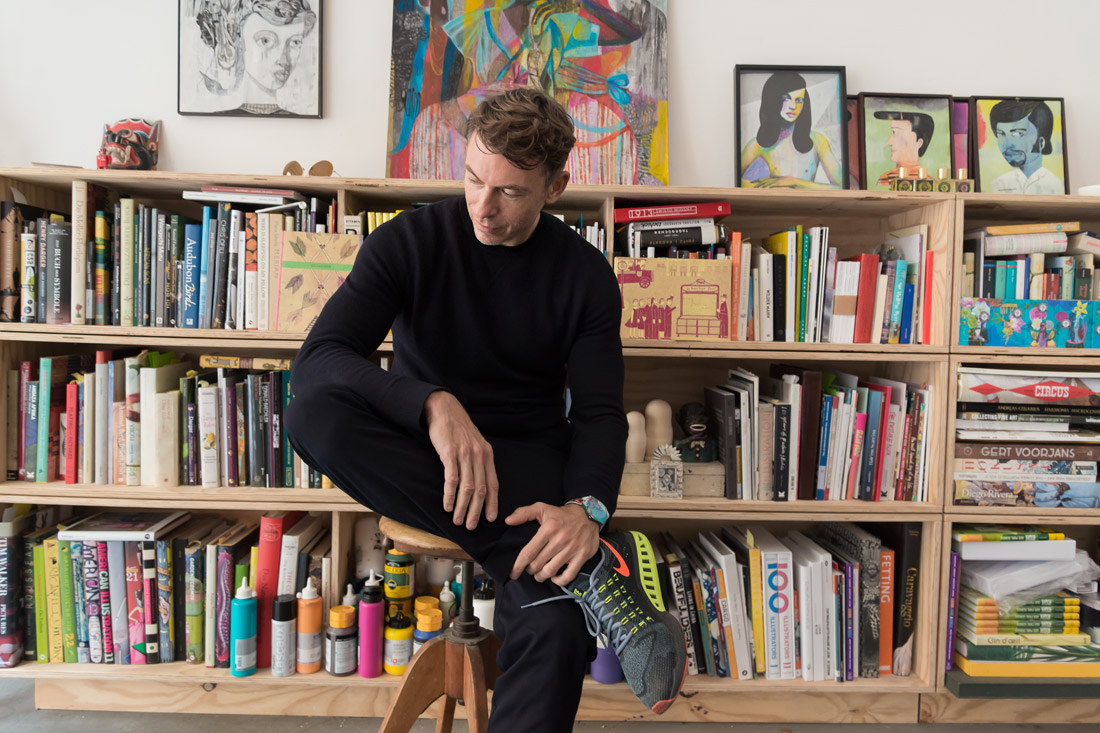
ABOUT OLAF HAJEK
Name: Olaf Hajek
Occupation: Illustrator, Painter
Location: Berlin
Info: www.olafhajek.com
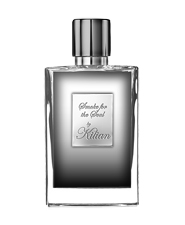
ABOUT THE PERFUME
Perfume: Smoke For The Soul by By Kilian
Category: unisex
Perfumer: Fabrice Pellegrin
Year: 2014
This blind tasting was first posted on Nov. 27. 2014.


